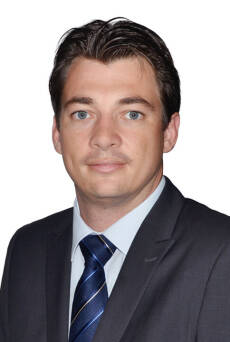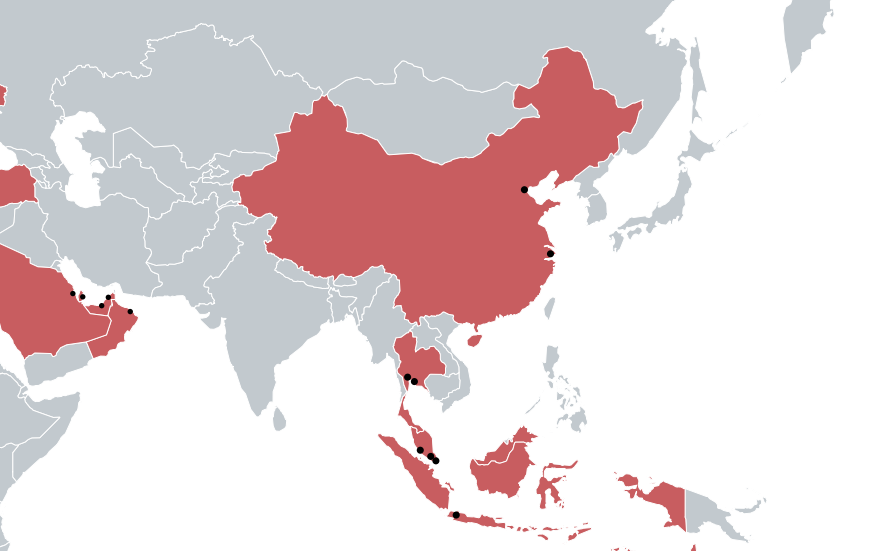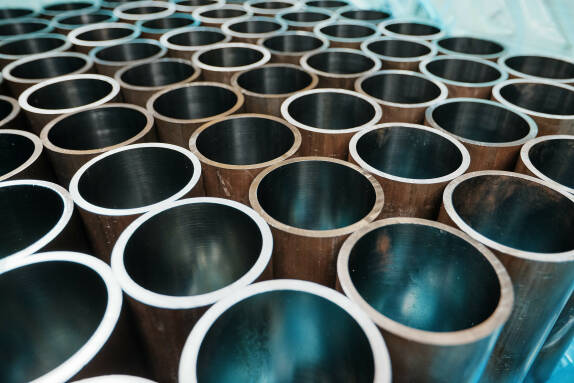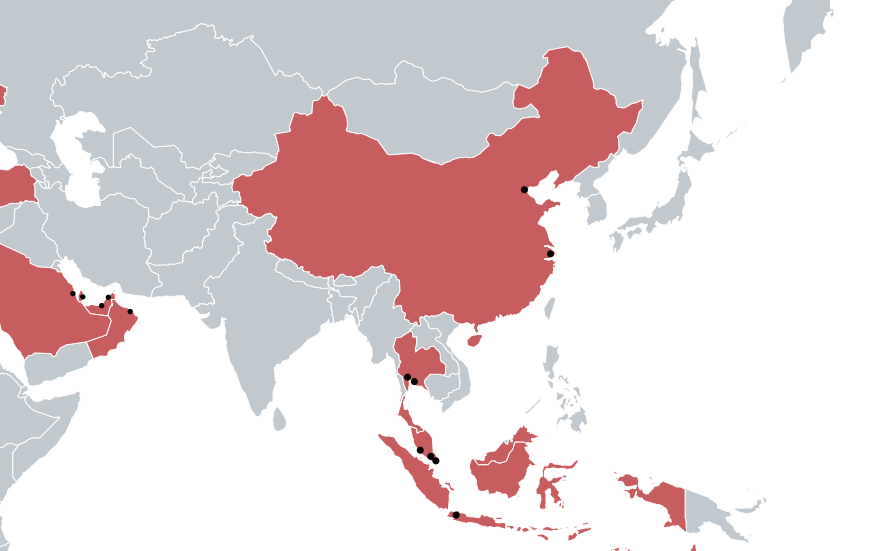Van Leeuwen’s presence in Singapore started in 1979. In the early days, most of our products were produced in Europe, but this changed; the dominance of Asian origin products as used by customers and projects in this region has grown rapidly over the past two decades. For this reason, it is important for Van Leeuwen in Asia and the Middle East, to continuously follow quality, price, and availability developments in both traditional and newer production hot spots for steel pipes, fittings and flanges. The rapidly changing various geopolitical developments have its impact on the global steel market as well.
As the largest steel producer in the world, China is focused on domestic demand as well as export. Domestic demand has not (yet) recovered, in part due to the absence of construction projects in China and because of excess capacity. Largescale deliveries to Europe and the US are not possible due to trade restrictions. The price of welded and seamless pipes remains rather stable despite several attempts from manufacturers to increase prices to healthier levels. The price of stainless steel pipes and components is under pressure and is expected to further decrease slightly.
On October 1st, 2023, the transitional period of the Carbon Border Adjustment Mechanism (CBAM) has started. CBAM is a milestone for the implementation of the EU Green Deal. Let's explore the impact of CBAM immersion on the steel industry.
EU steel industry and CBAM
Our Van Leeuwen network in Asia

What does CBAM stand for?
The Carbon Border Adjustment Mechanism (CBAM) is the EU's tool to put a fair price on the carbon emitted during the production of carbon intensive goods that are entering the EU. Target of the EU policy is to cut global carbon emissions by taxing carbon-heavy (steel, aluminum, etc.) imports from non-EU countries with weak regulations to halt carbon leakage.
A transitional period is defined from 2023 to 2025. By confirming that a price has been paid for the embedded carbon emissions generated in the production of certain goods imported into the EU, the CBAM will ensure the carbon price of imports is equivalent to the carbon price of domestic production, and that the EU's climate objectives are not undermined. CBAM will be rolled out gradually between 2026 and 2034.
What is the impact of CBAM?
The mechanism is important because EU steel producers have the highest environmental and climate protection goals in the world - and higher production costs that accompany this effort. Considerable investments have to be made in the coming years. Fluctuations in carbon prices and regulatory changes may further exacerbate uncertainty. However, decarbonization practices become more of a priority for the steel industry.
Van Leeuwen has the top priority for the coming years to work toward carbon-neutral operations with the aim of being the greenest pipe and tube distributor in the world before 2030. Our 2,400 employees, who have specialized knowledge of procurement, processing, project management, logistics and inventory planning, work closely with you, also in any question about CBAM.
Due to the structurally too low prices for mills, the expectation is a further consolidation of the Chinese steel industry, leading to a decrease in production capacity. By contrast, we see an increase in the production capacity of local producers in Asian countries due to local protectionism and/or export access to Europe and the US markets.
Currently, Van Leeuwen is seeing opportunities with regional players on the energy market, both in Asia and the Middle East. There are many projects in the energy sector: new offshore platforms and LNG plants. The renewable energy market is also becoming increasingly more important and includes hydrogen plants, refineries for cleaner energy and windfarms for offshore wind energy. We have strong local teams that know the market and regulations very well. In turn these teams can fall back on our solid international network.

Regional Managing Director Van Leeuwen Asia



Back to index
EU steel industry and CBAM

Back to index
EU steel industry and CBAM
On October 1st, 2023, the transitional period of the Carbon Border Adjustment Mechanism (CBAM) has started. CBAM is a milestone for the implementation of the EU Green Deal. Let's explore the impact of CBAM immersion on the steel industry.

EU steel industry and CBAM
Our Van Leeuwen network in Asia

Regional Managing Director Van Leeuwen Asia
What does CBAM stand for?
The Carbon Border Adjustment Mechanism (CBAM) is the EU's tool to put a fair price on the carbon emitted during the production of carbon intensive goods that are entering the EU. Target of the EU policy is to cut global carbon emissions by taxing carbon-heavy (steel, aluminum, etc.) imports from non-EU countries with weak regulations to halt carbon leakage.
A transitional period is defined from 2023 to 2025. By confirming that a price has been paid for the embedded carbon emissions generated in the production of certain goods imported into the EU, the CBAM will ensure the carbon price of imports is equivalent to the carbon price of domestic production, and that the EU's climate objectives are not undermined. CBAM will be rolled out gradually between 2026 and 2034.
What is the impact of CBAM?
The mechanism is important because EU steel producers have the highest environmental and climate protection goals in the world - and higher production costs that accompany this effort. Considerable investments have to be made in the coming years. Fluctuations in carbon prices and regulatory changes may further exacerbate uncertainty. However, decarbonization practices become more of a priority for the steel industry.
Van Leeuwen has the top priority for the coming years to work toward carbon-neutral operations with the aim of being the greenest pipe and tube distributor in the world before 2030. Our 2,400 employees, who have specialized knowledge of procurement, processing, project management, logistics and inventory planning, work closely with you, also in any question about CBAM.

Due to the structurally too low prices for mills, the expectation is a further consolidation of the Chinese steel industry, leading to a decrease in production capacity. By contrast, we see an increase in the production capacity of local producers in Asian countries due to local protectionism and/or export access to Europe and the US markets.
Currently, Van Leeuwen is seeing opportunities with regional players on the energy market, both in Asia and the Middle East. There are many projects in the energy sector: new offshore platforms and LNG plants. The renewable energy market is also becoming increasingly more important and includes hydrogen plants, refineries for cleaner energy and windfarms for offshore wind energy. We have strong local teams that know the market and regulations very well. In turn these teams can fall back on our solid international network.

Van Leeuwen’s presence in Singapore started in 1979. In the early days, most of our products were produced in Europe, but this changed; the dominance of Asian origin products as used by customers and projects in this region has grown rapidly over the past two decades. For this reason, it is important for Van Leeuwen in Asia and the Middle East, to continuously follow quality, price, and availability developments in both traditional and newer production hot spots for steel pipes, fittings and flanges. The rapidly changing various geopolitical developments have its impact on the global steel market as well.
As the largest steel producer in the world, China is focused on domestic demand as well as export. Domestic demand has not (yet) recovered, in part due to the absence of construction projects in China and because of excess capacity. Largescale deliveries to Europe and the US are not possible due to trade restrictions. The price of welded and seamless pipes remains rather stable despite several attempts from manufacturers to increase prices to healthier levels. The price of stainless steel pipes and components is under pressure and is expected to further decrease slightly.

Back to index

Back to index